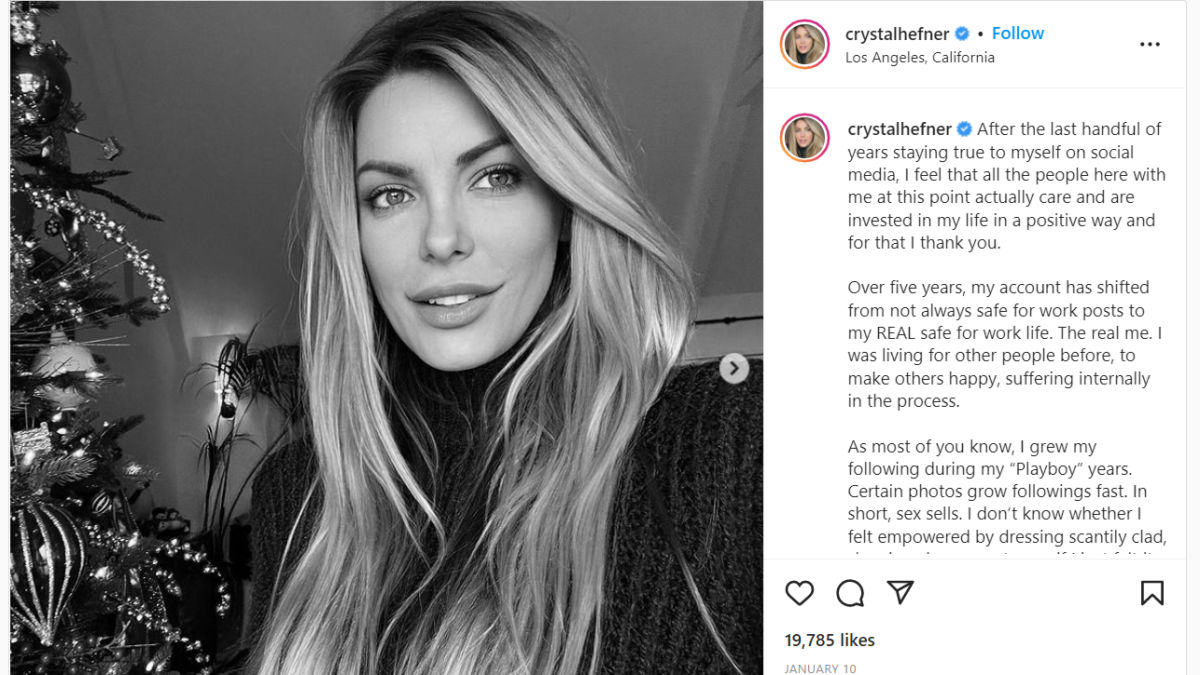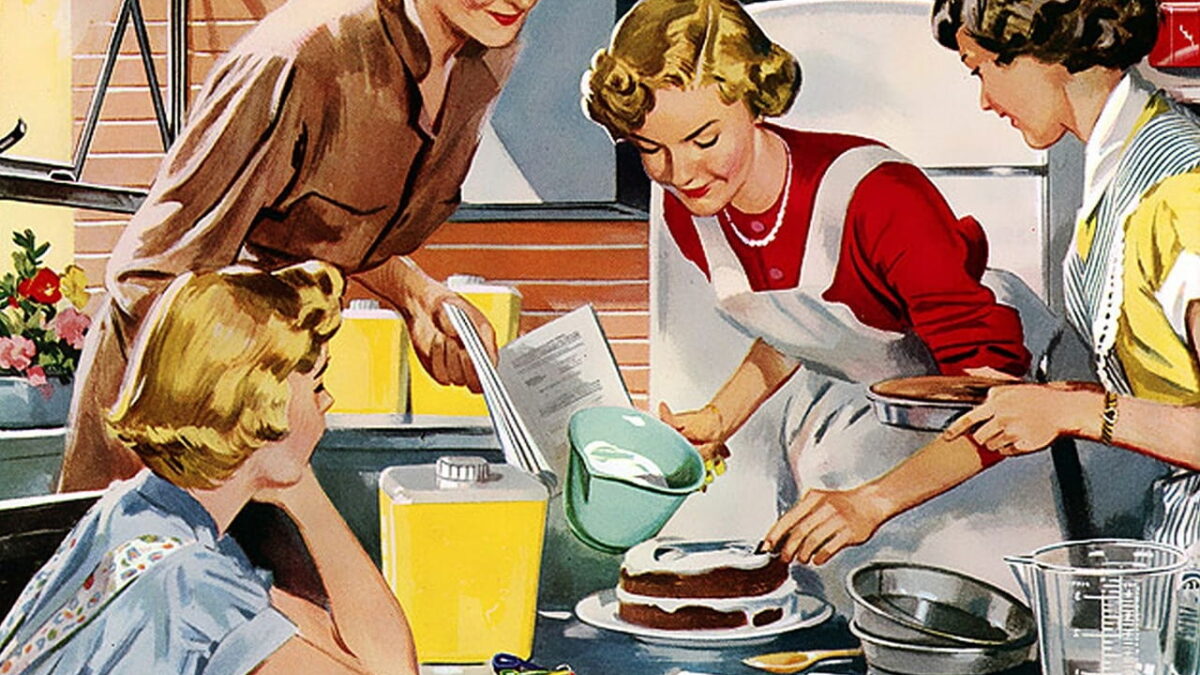Crystal Hefner, the 35-year-old widow of Playboy magnate Hugh Hefner and a former Playboy Bunny, revealed on Instagram earlier this month that “modesty is what empowers me these days” and that she’s removed “everything fake from my body” following a career built in part on her raunchy Playboy brand.
“I don’t know whether I felt empowered by dressing scantily clad, showing cleavage, etc …or if I just felt it was expected of me or what,” she wrote, next to a black-and-white selfie in a turtleneck sweater. “But now I can confidently and 100% proudly say, modesty is what empowers me these days, and because it feels so much better internally, it will probably be this way for the rest of my life.”
A year ago, she hinted at the move in a post about removing her “toxic” implants that made her “very ill.”
“Our culture is a trap and makes women feel terrible about themselves,” she wrote in January 2021. “How our culture defines beauty makes it impossible to keep up with. Women are overly sexualized. I know from the worst kind of experience. … To this day I need to write reminders of why I’m worthy that have nothing to do with my physical appearance to convince myself that I’m enough.”
Hefner is absolutely right that the cheap way our society often markets to women (and just plain markets women) foolishly promises empowerment through sexual promiscuity. She’s right that there’s nothing truly empowering about fake boobs hanging out of a tacky outfit that has the sole purpose of showing as much skin as possible.
But notice that, while Hefner’s turtleneck is certainly modest, it’s still striking and it certainly isn’t ugly. That’s because — as she seems to sense — the opposite of hypersexualization isn’t frumpiness, it’s beauty!
Too often, the “feminists” among us offer a false dichotomy of alternatives to the Playboy standard. Criticizing the sexed-up caricatures of women in Western media is usually only acceptable if it’s because you think the industry is not being inclusive enough and is therefore bigoted. If you object on moral grounds, you must be a frumpy, fundamentalist prude who’s an even bigger bigot.
The woke critics of hypersexualizing women aren’t actually mad at the dehumanizing idea of a woman stripping for a movie camera (they call it empowering). They’re mad that audiences are usually more interested in seeing women on camera who are considered attractive, which contradicts the mission of erasing biological differences in the name of equity. Instead, they say, anything and everything down to a woman who has mutilated her body to look like a man’s is “beautiful,” which of course would really mean that beauty doesn’t exist at all.
That’s not to say that beauty always wears a size zero or has flawless skin, shiny hair, or other Barbie doll stereotypes. Beauty is subjective in some real sense, and loving or admiring a woman often (and legitimately!) leads to truly seeing her as more beautiful. It’s a far broader category than the Hugh Hefners of the world might give it, but it is still a category, usually cultivated and achieved by some combination of taste and thoughtfulness without and graceful modesty within.
To condemn Playboy Bunnies and butt injections doesn’t require you to fill your closet with potato sacks or stop shaving your armpits in protest, any more than it requires you to say with a straight face that Cosmopolitan Magazine’s feature on faceless, naked, distorted, obese bodies is some form of profound beauty. (That article still reduced women to their bodies, of course, but in a reality-defiant and dehumanizing way that can only be described as grotesque.)
True beauty has a confidence that doesn’t seek validation in naked sex appeal or in self-congratulatory ugliness. It’s dressed in the clothing equivalent of what Edmund Burke called the “decent drapery of life,” which renders beauty by both revealing and concealing.
I don’t know if Crystal Hefner would agree with me on all of that, or exactly the process that led to her candid observations. But she seems to be, like many women, frustrated by a world of fake beauty while still longing for such a thing as beauty to be real.
Not only is beauty real, it’s a good, desirable thing. Defined rightly, it’s part of the lovely vocation of womanhood and femininity. It’s something to be curated, not rejected (or injected). And that is empowering.









